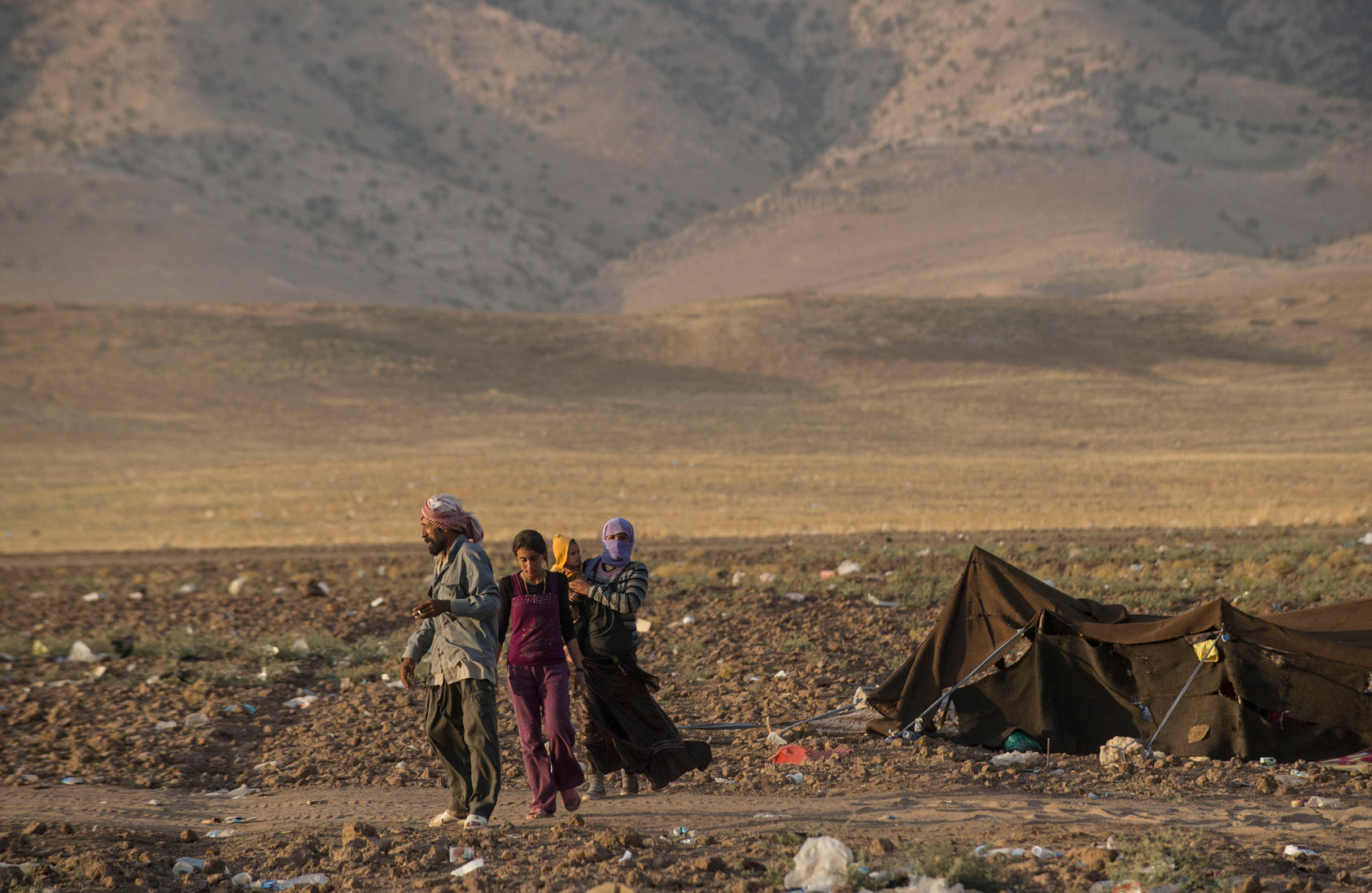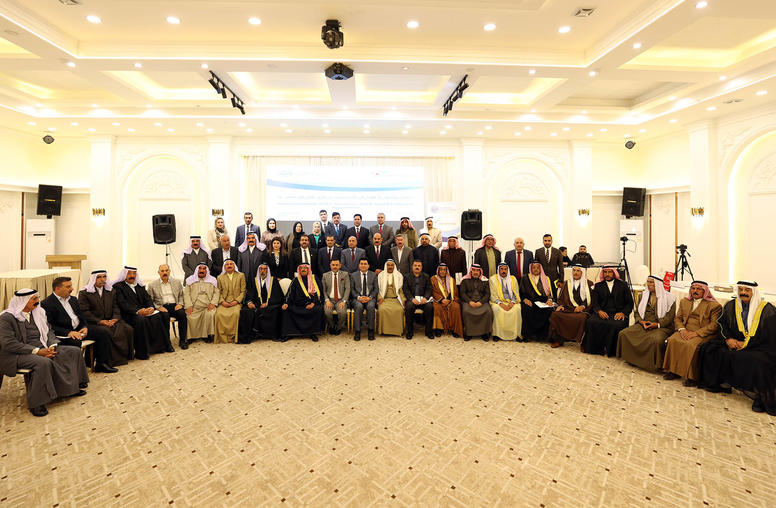'Islamic State' Attacks Fuel Anger, Cloud Talk of Reconciliation in Iraq
The devastation wrought by the past year’s renewed conflict in Iraq -- and equally by the long slog to dislodge the Islamic State -- can be captured in the frame of a teenage boy. The new fighting atop a decade of war after the 2003 U.S. invasion brings not only further physical damage, but a dangerous breakdown of the social fabric.

“The offspring of those who started fighting in Iraq in 2003 are today 12 years old,” said Elie Abouaoun, the director of Middle East programs at the U.S. Institute of Peace, reflecting on a recent visit to Iraq. “In three years, this generation will start fighting, as their fathers did.”
The destruction extends far beyond the thousands killed and the estimated 5.5 million in Iraq who are reeling from the refugee crisis. The effects undermine the very prospects of ending the fighting and nurturing reconciliation when it’s over.
Abouaoun and USIP Senior Program Officer Sarhang Hamasaeed saw the evidence during their visit to Iraq in December: Deep anger, increasing degrees of hate speech, widespread militarization – all in communities like those of religious minorities who had resisted extremes even during the darkest days of 2006 and 2007. The difference even between June 2014, when Hamasaeed and Abouaoun had previously traveled to Iraq, and December were palpable.
“There is somehow a change in the set of social values,” Abouaoun said. “Violence is more accepted nowadays,” especially among youth, he said.
The two USIP experts discussed social, political and security conditions in a roundtable at USIP on Jan. 14 that also featured Manal Omar, the acting vice president for the Institute’s Center on the Middle East and Africa, and Thomas Weiss, the chief of mission in Iraq for the International Organization for Migration. USIP and IOM are comparing notes and tracking trends in and around Iraq to better craft assistance plans for the longer term. IOM has 157 member nations and works with international organizations such as the United Nations to provide humanitarian aid and a range of services for refugees and other migrants.
‘Unprecedented’ displacement
IOM estimates that more than 5.5 million people in Iraq are affected by the country’s “unprecedented” displacement crisis, said Weiss, whose organization has a staff of about 600 in the country, mostly local citizens. About 2.2 million people were forced from their homes in the wake of the rampage of the Islamic State militant group across the country’s north last year, before a U.S.-led international coalition delivered significant setbacks to the fighters in recent months.
Iraq already had 500,000 to 1.4 million people forced from their homes in the previous war that broke out in the aftermath of the 2003 invasion, as well as 230,000 Syrians who took refuge from their war. An additional 70,000 Iraqis have returned from neighboring countries but don’t yet have permanent shelter. An estimated 1.8 million to 2 million people are directly affected by the displacements by virtue of having taken in fellow citizens who’ve been forced from their own homes, Weiss said.
Iraq will need extensive assistance over the long term to begin healing, a process that Weiss described in three stages, many of them needing to be addressed simultaneously: saving lives, social cohesion and educational and economic development.
“I believe it is fairly urgent to talk about reconciliation,” Weiss said, adding that 80 percent of those forced from their homes come from four communities, including half who are Sunni Arabs. The rest are Yazidis, Christians and Turkmen. IOM is doing extensive psycho-social support for Yazidis and Christians under a program financed by the United States, he said.
Communities of Iraqi minorities like the thousands of Yazidis who took refuge on a mountaintop last summer previously had been models for calm responses in the face of attacks, Hamasaeed said. But in August 2014, the Yazidis drew international attention – and a joint U.S.-Kurdish military rescue effort -- to the plight of Iraqis driven from their homes by the so-called “Islamic State” militant group as it swept across northern Iraq, capturing vast territory, including the country’s second-largest city of Mosul.
Fear, force and time change people, and this is what is happening
‘How can I be tolerant?’
“Fear, force and time change people, and this is what is happening,” Hamasaeed said. “You say the word ‘tolerance’ in a room, and you have a Yazidi explode and say … ‘How can I be tolerant with somebody who I raised, who I took to school, who I cared for at a time when he was sick -- and it was that person who looted my house, took our women and [who] is raping our women.’ So there are very raw emotions.”
Whereas a year ago the imperative for reconciliation was at the national level, the anger at the local level today because of what has happened since then will require reconciliation community-by-community, tribe-by-tribe, town-by-town, Hamasaeed said. As examples, he cited two Sunni warring tribes in Anbar, and a separate June 2014 massacre by forces led by the Islamic State of perhaps 1,700 Iraqi military cadets at Camp Speicher in Salahuddin Province, an attack that some Shia blame on Sunnis.
He and Abouaoun see a “fast-growing militarization” in Iraq, not only among the radical groups but also among communities that previously weren’t considered extremist. The trend is exacerbated by the anger that leaves individual susceptible to recruitment by militant groups, the flood of weapons into the country from multiple sources trying to bolster one side or another, and sometimes-haphazard military training by outside forces.
“What we’ve seen as a result of this strategy is that it is leading to massive distribution of weapons among people in the region, and in many cases it is being done in a very chaotic way,” Abouaoun said. And those getting the weapons are being trained and manipulated by a range of interests from around the region.
Sunnis, including tribes, are being trained variously by Qatar, Jordan, Saudi Arabia. Lebanese Shia from Hezbollah as well as Iraqi Shias fighting in Syria, Iraqi Kurds traveling to Turkey to fight in Kobani across the border in Syria. Shia military groups proliferating in addition to the militants led by Moqtada al-Sadr and the Badr Brigade. Next door, an estimated 1,000 military groups operate in Syria.
While not new, the scope of the militarization “has become really dangerous,” Abouaoun said. The consequences at the community level are daunting, from ever wider drive for revenge on all sides, which will create barriers for displaced citizens to return to their communities even after the bloodletting ends.
Regional ramifications
The militarization of Iraqi society risks becoming one of the trends left unaddressed by the international community before it’s too late, USIP’s Omar said.
And what is happening in Iraq must be tied to developments across the region, she said. Not only have borders become blurred by the conflicts, but fighting in one place fuels hostility and aggression somewhere else. Addressed as soon as possible with measures that extend beyond security assistance to education, governance and economic development, the patterns might be interrupted enough to stem further deterioration.
“We can actually prevent further conflict,” Omar said.
The new Iraqi government has taken some steps that give hope for positive engagement, Weiss said, including a recent “humanitarian dialogue” with international aid organizations and diplomatic delegations to coordinate responses.
Hamasaeed said Kurds, Sunni, Shia and minorities all have welcomed initial steps by the new government of Prime Minister Haider al-Abadi, such as a crackdown on 50,000 non-existent “ghost soldiers” who were placed on the payroll of the Iraqi Army, with the proceeds skimmed in corruption gambits. But it will be critical to keep the momentum of positive change going and implement measures that create practical improvements in the lives of citizens and communities, he said.
Still, huge gaps remain between the scope of the humanitarian catastrophe and the assistance available. Many Iraqis have stepped up to help those displaced, but many refugees still don’t have shelter sufficient to protect them against the harsh winter in the Kurdistan region, for example.
And despite some military gains against the Islamic State in the Ninevah Plains and in Diyala and Anbar provinces, international estimates that it might take three to five years to suppress the militant group are disastrous in terms of the further destruction that suggests, Hamasaeed said. And the longer the Islamic State functions, the more time it has to recruit more fighters and poison more minds.
“No matter what, we’re really kind of behind when it comes to the magnitude of what’s happening on the ground and the need for coordination on the ground,” Omar said.



